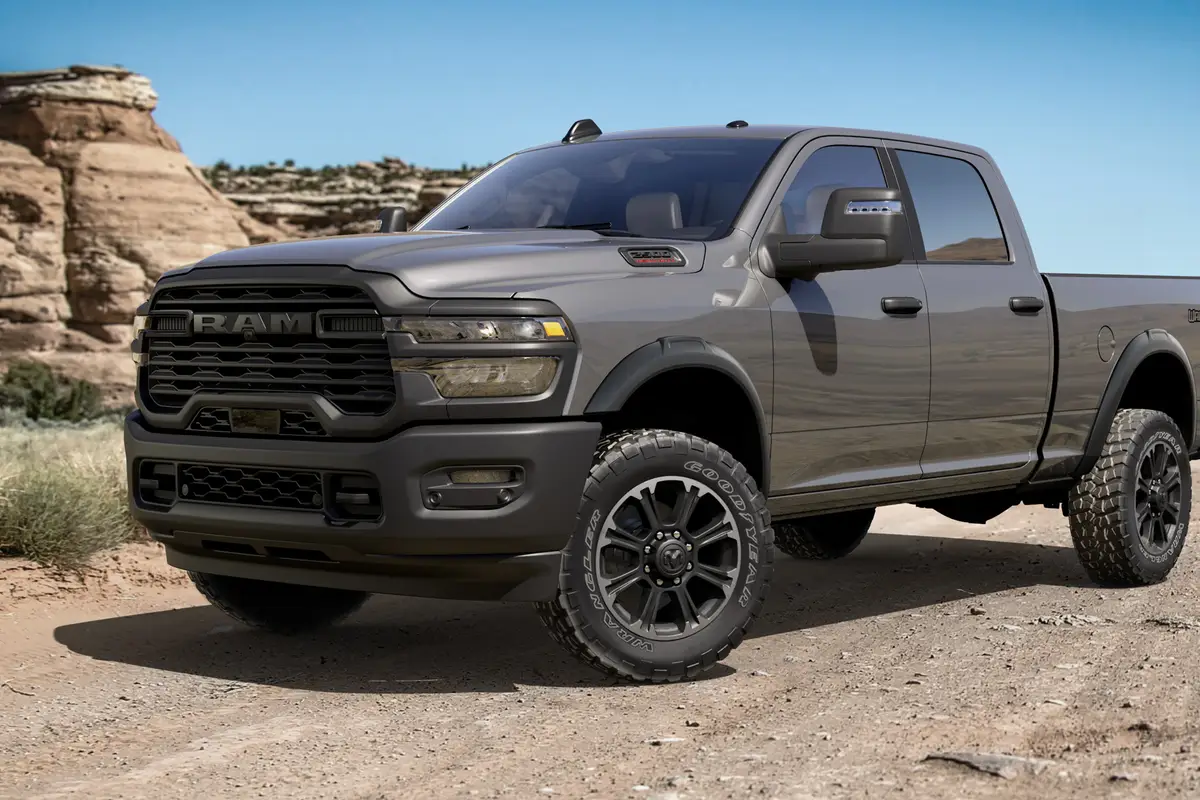PickupTrucks.com's view
General Motors promises that its Two-Mode Hybrid-electric drive system gives the company’s pickups and SUVs both fuel-sipping electric power and “tremendous trailering capability,” thanks in part to the brawny 6.0-liter small-block V-8 gas engine under the hood.
I tested the trailering thesis by towing an open-car trailer with a race-spec Mazda Miata aboard over a 600-mile route to Road Atlanta for a Sports Car Club of America event. I wanted to know whether the hybrid was an efficient alternative for towing, like a heavy-duty diesel pickup, or whether it’s an ideal city truck that can ably tow when needed.
EPA data proves Chevy’s hybrid is more efficient in regular driving; the Silverado 1500 four-wheel-drive crew cab I tested is rated at an impressive 20/20 mpg city/highway. The two-wheel-drive version rates even better, at 21/22 mpg city/highway, so it might have been a marginally preferable test subject, but the 4×4 is what was available. All Silverado hybrids are crew cabs with short beds.
The four-wheel-drive Silverado 1500 Hybrid HY2 model I tested had a price of $47,305, and with a sunroof and destination charge the total fell just shy of $50K. You can buy a lot of gas for the difference in price between this hybrid and one of the conventional 6.0-liter V-8 pickups that dealers are so desperate to sell. (The two-wheel-drive Silverado Hybrid starts at $38,020.) At least in the near-term, buyers qualify for a $2,200 federal tax credit for a gas-electric Silverado, or its twin the GMC Sierra, but the rebate will be phased out after GM has sold over 60,000 eligible trucks.
To be fair, that expensive HY2 version I drove was pretty nicely equipped, with leather, a navigation system, satellite radio and some respectable truck parts, including a Z85 handling/trailering package, a locking rear differential and an Autotrac transfer case. Remote start, a typical GM cold-weather goody, was absent, which is hard to swallow at this price. And where was a 110-volt power outlet in the cab? C’mon — we’ve got 300 volts coming from the battery pack under the rear seat, and I’ve gotta use a power adapter plugged into the 12-volt cigarette lighter to power my phone or laptop?
Chevy’s claims that its Silverado has the efficiency of a hybrid and the power of a V-8 gloss over the fact that the Silverado Hybrid’s capabilities are somewhat diminished compared with the gas truck. The truck carries 600 pounds of electric motors and batteries, which somehow only reduce its payload capacity by about 300 pounds, to 1,418 pounds. Its towing capacity, however, takes a big hit, with a rating of only 5,900 pounds (6,100 pounds for two-wheel-drive versions) compared with about 9,500 pounds in a gas truck. That’s because, given its current cooling capacity, the extra weight would overheat the electronics of the electric drive system, Chevy says.
Even the gas engine’s power is diminished; it’s rated at 332 horsepower instead of 367, with 367 pounds-feet of torque rather than 375. This is because the engine’s intake valve timing was delayed to help maximize fuel economy. It has a smaller cylinder head chamber for the same reason, which also diminishes power. Further, the exhaust system was specifically tuned to help muffle the sound of the engine when in four-cylinder mode, and that also costs a little power.
Meanwhile, each of the two electric motors contributes a maximum of 81 hp, for a total of 162 hp, but because the gas and electric motors don’t make maximum power at the same time, the total system power isn’t simply 332 plus 162. Rather, the system’s combined maximum output is 372 hp.
In everyday driving, the electric drivetrain conveys some unusual sensations, as the truck whirs away from stops even when the gas engine is running. The V-8’s revs are nearly static while the electric motor does most of the work, so there’s little sensation of revving up and changing gears. Once the gas engine is warmed up, it shuts off, permitting the electric motor to power the Silverado exclusively at speeds up to 30 mph.
The 42-volt electric-power rack-and-pinion steering is nicely weighted with good feedback, in contrast to the majority of electric systems, which tend to be numb in feel. GM says the Silverado Hybrid’s steering provides up to a half-mpg improvement in fuel economy over the hydraulic steering pumps in the conventional Silverado lineup. The system is sometimes slow to react after startup, though, so I periodically found myself turning the wheel before the power boost had arrived when I was in a hurry to get going.
When a full-size pickup tows a small trailer and car with a combined weight of about 3,200 pounds, you don’t expect it to feel like much of a load, and that was the case in the Silverado Hybrid; the truck barely noticed the trailer was back there, cruising serenely down the interstate.
I passed the time on the road watching the dashboard display, which shows when the engine is running on four cylinders to save gas — that was more interesting than the satellite radio selections, which seem to have become as repetitive and dull as terrestrial radio.
I also passed the time by buying gas, because while towing the trailer the Silverado’s range on a tank of gas was just over 300 miles. The track was just over 600 miles away, and I’d put a few miles on before leaving, fetching the car and trailer. That meant two stops to fill up the 26-gallon tank on the way. For the return, I topped it off just before departure, refilled once after 309 miles and made it home with the fuel light on.
This unexpectedly short range provides a hint to my verdict on the hybrid: Towing as light a car trailer as you’re likely to encounter, the Silverado scored 13.5 mpg, which is the same as GM’s conventional gas-powered trucks and SUVs, in my experience.
The gas-powered Silverado XFE costs thousands less than the Two-Mode Hybrid and scores 15/21 mpg city/highway while boasting a similar towing capacity. A Silverado 2500 LT crew cab equipped with a 6.6-liter Duramax diesel has a similar MSRP as the hybrid I drove, $47,350 before rebates, and while it has no EPA rating, experience indicates it would be similarly efficient in regular driving and would surely beat the hybrid’s mileage while towing the same trailer over long distances.
A fellow SCCA competitor towed an enclosed trailer – so with an enormous frontal area — and about 10,000 pounds gross weight using a 2008 Silverado 3500 Duramax dually, and he got the same 13.5 mpg.
My advice to truck buyers considering buying a hybrid pickup is to think carefully about how you’re going to use the truck and whether it’s worth the extra several thousand dollars you’ll pay for a hybrid.
In frequent stop-and-go city traffic, very dense urban areas and large business or educational campuses, the Silverado Hybrid excels because you’re able to whir silently about, burning only electrons at low speeds — like I did around the racetrack paddock even while pulling several thousand pounds of trailer behind the truck.
If you drive in suburban or rural areas and tow infrequently, I’d recommend the XFE. It’ll save you lots of money up front and still do relatively well on gas mileage. If you want an ideal long-distance tow vehicle that’s able to pull about three times as much as the Silverado Hybrid and get better mileage while doing so, a very well-equipped four-wheel-drive Silverado 2500 crew cab with a Duramax diesel costs roughly the same as our $50K hybrid test truck.
Latest news



